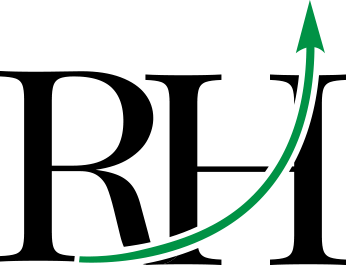Chris Reilly’s note: Today, I’m finishing my conversation with our good friend and veteran options trader Jared Dillian. If you missed Part 1, go here.
Below, Jared shares how to approach options in today’s market, the trap many options traders fall into, and much more.
We also talk a bit more about his Options Masterclass, which you can get for 50% off here.
***
Chris Reilly: Let’s talk about what’s happening in the markets. Things seem to be settling down a little bit compared to last month.
There was a period last month where the S&P 500 went six straight days with a trading range over 5%. And markets can change on a dime with the latest tariff headlines...
I know volatility is good for trading. But is this environment good for trading options, specifically? Would new traders be better suited waiting until things get a bit calmer?
Jared Dillian: Well, I wouldn’t say it’s necessarily good or bad for options trading. Volatility is good for trading, but in terms of trading options, that definitely makes it more dangerous.
I mean, we had a day a couple weeks ago when Trump walked back the tariffs where the market was up like 8.5% on the day. And if you were positively exposed to that, then that was great. If you were negatively exposed to that, then that was catastrophic.
Volatility presents opportunities and it also presents risks. The one thing about volatility is that you have to keep your position sizes smaller, which is something that a lot of people don’t understand.
You know, you can trade in relatively big sizes when markets are calm. But when they’re not calm, you have to trade smaller.
Chris: Makes sense. So if someone has limited capital and they’re trying to decide between buying stocks directly or using options, do you have a framework or a general rule of thumb for how they should go about that?
Jared: I think people fall into this trap where they tend to want to use options too much. And they use options when really just buying the stock is good enough.
For example, I’m taking a position in an ETF right now. It’s a country ETF and I have a long-term view on it. So, I can buy long-dated call options or I can just buy the stock. And if you buy the stock, you get the dividends... If you buy the calls, you don’t get the dividends—which is priced into the value of the options—but you’re not getting those cash flows. So it makes sense to just buy the stock.
|
I think people tend to overdo it with options and they tend to outsmart themselves. Options are best when you use them to mitigate risk in some way.
Chris: We bought put options on the S&P 500 in our flagship Disruption Investor advisory back in August, when insurance was cheap. And we recently took some profits, letting the rest of the position ride right now. What is the most common way you use options?
Jared: Probably when I’m actually speculating on a move lower. I don’t like to be short things, cause if you’re short something, you’re exposed to unlimited losses.
I don’t really have a lot of success shorting things, but you can buy puts. And I’ve been pretty successful at buying puts in the S&P 500, picking tops: Basically, profiting from a move lower and an increase in volatility. So that’s probably the most common situation in which I use them.
I’m not a big fan of hedging with options all the time because puts can be very expensive. As a general rule, if you buy puts all the time in a stock, it’s going to cost you about 10% to 12% a year just paying premiums.
That doesn’t really make sense unless you have a stock that’s going up 50% a year. So most of the time, I’m just buying puts and waiting for the market to crash.
Chris: You recently launched your Options Masterclass, and it’s gotten great reviews so far. You’ve said when trading stocks, you only have to think in two dimensions. Stock up. Stock down. Easy enough. But with options, you have to think in five dimensions, like the Bulk Beings in the movie Interstellar.
You also mentioned that, during your time on the exchange floor, you worked with both math PhDs and former construction workers who figured it out.
So, how does your Masterclass bridge this complexity gap? What’s your approach to making options understandable for serious investors who aren’t options specialists?
Jared: Well, there are plenty of books on options, and they range from the very simple to the very complex. You have “Options for Dummies” and books like that, where they have the hockey stick diagrams and you learn the basics, but not much else.
And on the high end, you have academic textbooks that take you through how to derive the Black-Scholes formula and all the math behind it.
There’s a book written by a guy named Sheldon Natenberg—called “Options Volatility & Pricing”—that strikes a pretty good middle ground, but it’s not super useful for retail investors because it’s really designed for options market makers. It was designed for the person on the floor back in the '80s and '90s who was making markets on options.
So you know, I really felt that there weren’t any kinds of texts that spoke to directional retail options traders and also gave them some of the theoretical background behind it. And that’s really what the Options Masterclass does.
Chris: You said that options are like riding a bike. Once you figure it out, it’ll stick with you forever. But you also said it took you about a year of being immersed in options, trading daily, to really get the hang of it.
So for the RiskHedge reader who wants to start incorporating options into their investment approach responsibly, it does seem to me like this Masterclass is a great place to start.
Is there anything else you want to mention about the Masterclass, maybe a little more about what someone can expect?
Jared: Well, I don’t want anyone to think that it’s only for beginners. I would say it’s a beginner to intermediate course with some advanced topics.
I’m sure there are some people reading this saying, “Well, I know about options... I’ve traded options for years. I really know what I’m doing.” I guarantee that if you took this course, you’d learn a lot of new things that you hadn’t thought of before.
So it’s not specifically for beginners. Although if you are a beginner, it’s a great place to start learning the basics. But everyone will benefit from this.
Chris: Great. Thank you, Jared. And reader, if you’re interested in learning more about Jared’s new Options Masterclass and want to start today, please go here.



